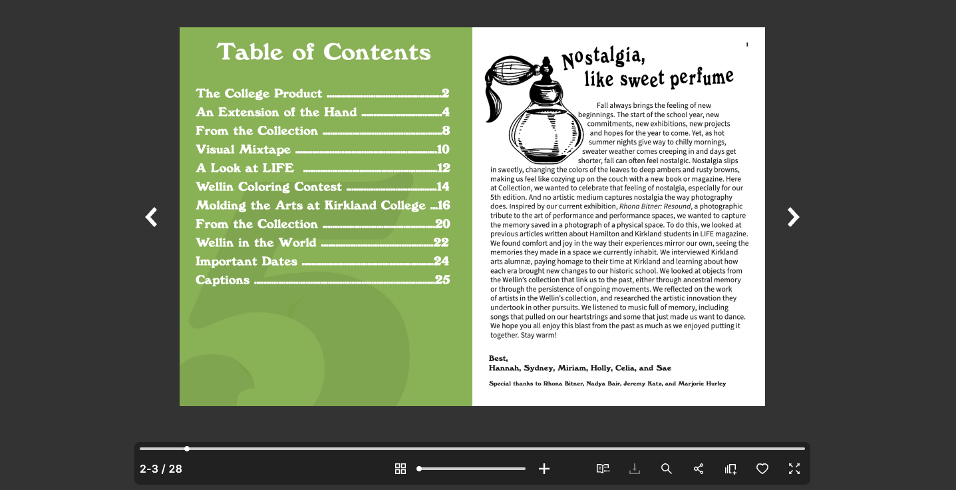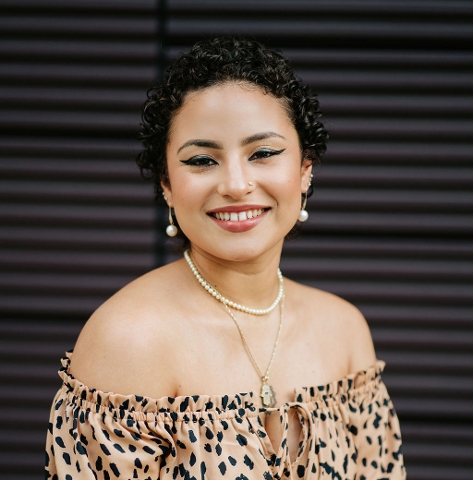
Our Wellin magazine, “Collection,” originated as a simple newsletter. When given the opportunity to write about the museum from a student perspective, we decided to make something bigger—something we hoped would increase the presence of the Wellin Museum on campus and encourage more students to explore the museum themselves. The magazine became an homage to each semester’s happenings, both in the museum and around campus. Each magazine tells a story, both of our process in creating it and of the museum itself, as it is molded and shaped to include new artists, exhibitions, and student contributors.
Our first step in developing the magazine is just looking. We spend a lot of time looking at other magazines, art museums, digital art galleries, and social media, saving every piece of inspiration we find. Usually, we create a vision board that includes a color scheme, certain fonts, a theme, and lots of pictures. Most of our inspiration comes from the first few days of collecting images and ideas. Our process is extremely collaborative—each member helps in building the initial ideas and contributes to the layout and the writing processes. In our first meetings we develop a calendar, in which we set deadlines for our articles, layout, and printing. We also brainstorm our content, keeping a few of our favorite repeating features and thinking creatively about how we can engage with the museum's current exhibition, the campus, and the broader art scene. Usually, we include an interview with a visiting artist, a few “From the Collection” articles, and a “Visual Mixtape.” Recently, we wrote an article about the artists of Kirkland College, in which we interviewed Kirkland alumnæ who shared with us their experiences with art during their time in Clinton.
The next few weeks are much more independent—as a writer, I, Miriam, work on my articles by gathering interviews or researching artworks and artists. The writing process is unique for everyone, but I separate it into three components: a brainstorm, an outline, and a draft. Each of these blends into the next, growing into a full article the more research I do and the more people I speak to. This is an opportunity to work with diverse parts of campus and engage with the larger art scene. After we have all of the content written, we head into editing, followed by layout week.
As layout editor, I, Celia, work with each writer to see what they have envisioned for their article and show them some of the ideas I have. Each step of the way, we collaborate, and once all of the content is written, I want to make the magazine come to life while considering our overall theme and each member’s vision. It has been challenging but rewarding to change the theme of each edition and create layouts that reflect the team's goals. Then, every member of the team proofreads each article in layout before sending it out to print. For the past few semesters, we've been working with the Hamilton Print Shop, sending out an initial draft and editing the writing and layout accordingly. After a few days of writing, editing, and re-writing, we send out the final copy to the Print Shop, and wait for the copies to be ready and distributed. We have found this experience to be incredibly rewarding as we get to engage with a museum that we love and think about how art impacts our campus. The magazine has also allowed us to have creative outlets outside of the classrooms while working to highlight what the Wellin has to offer.







